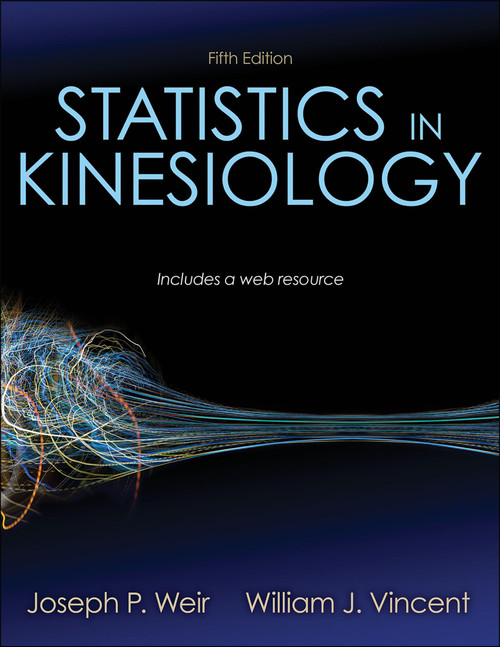The only statistics text currently available specifically for kinesiology majors, Statistics in Kinesiology, Fourth Edition, provides an accessible introduction to statistics concepts and techniques and their applications to kinesiology-related fields. Students will learn to use statistical tools to analyze quantitative data and then apply that knowledge to common questions and problems they will encounter as they continue their studies.
The fourth edition has been fully updated with new content that reflects the changing face of the kinesiology discipline, including the following:
A new chapter on clinical measures, including information on relative risk, odds ratios, and diagnostic testing, that will be especially pertinent to students in athletic training, physical therapy, and other fields dealing with clinical or rehabilitation populations
More detailed coverage of analysis of covariance (ANCOVA), which is becoming the technique of choice for analyzing pretestposttest control group design
New material on statistical inference and correlations, including information on hypothesis testing, types of error, confidence intervals, and partial correlations
Additional information on the quantification of reliability and its applications in kinesiology
Statistics in Kinesiology, Fourth Edition, begins with a thorough introduction to basic concepts such as measurement and research; organizing and displaying data; percentiles; mode, median, and mean; and measures of variability. The text then explores more advanced topics, including correlation and regression, t tests, analysis of variance (ANOVA), and analysis of nonparametric data. While the book offers an overview of the most important statistical concepts and techniques, the emphasis remains on those commonly used concepts in kinesiology disciplines, such as repeated measures ANOVA and the interpretation of interactions in factorial ANOVAs.
The fourth edition features extensive problem sets that will help students begin to calculate and interpret data. To enhance learning, students are encouraged to practice the calculations manually, but knowledge of advanced mathematics is not required. The examples given involve only basic algebra skills. Information on computer-based application is also provided throughout the book. In becoming familiar with the mathematical formulas used by software programs, students will learn to critically evaluate computer results and interpret data with greater confidence and ease.
In updating this text, the authors have been careful to retain the features that have made past editions such a success. Examples drawn from exercise physiology, biomechanics, physical education, and physical therapy help students relate to how the techniques are used and how those techniques allow them to answer questions in their chosen fields. The problem sets are designed to help students interact more fully with the content, thereby aiding in their comprehension of concepts and techniques. Answers for each of the problem sets are located in the back of the text and give students the opportunity to check their work as they progress. Chapter summaries and key words lists identify content that students should carefully review.
With Statistics in Kinesiology, Fourth Edition, students will gain a solid understanding of the statistical techniques used in physical activity fields. The books practical approach, based on the authors more than 50 years of combined experience in teaching statistics, will make it easy for students to learn these important, but often intimidating, concepts.











